The Combination of Images and Text on early playing cards
When playing cards have titles or legends these reference a written/literary tradition of some form. It connects the image to a wider cultural sphere, extending the visual impact.
The Medium is the Message
Many early playing cards had titles or legends alongside the images. These referenced a written/literary tradition of some form (historical, religious or secular literature, legends, etc), connecting the image to a wider cultural sphere, extending the visual impact. For example, French court cards were given names of heroes of antiquity, such as Caesar, Charlemagne, Paris or Lancelot, thereby connecting to the written body of French literature. This tradition goes back to the fifteenth century or even earlier. Some historians believe that court cards are actually based on these historical personages, but this is not necessarily true.

Above: cards from a primitive Latin suited pack, dated by paper analysis as “early XV century”. The cards are untitled, without any legends.
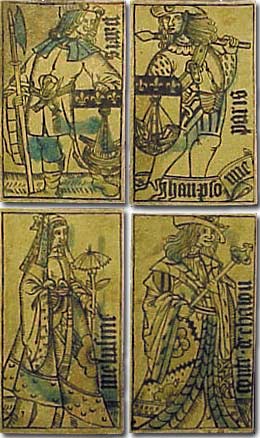
Above: four French cards designed by Jean Personne, c.1495. The cards carry inscriptions such as "Paris", "Melusine", "Conte de Chalou" and the maker's name, "Jhan Personne".

But many early cards were unnamed and unnumbered, so they were understood by card players on their own terms. If the cards are just images, with no title or legend, then the images must speak for themselves. There is no explicit reference to any text, or suggestion that the cards are based on historical persons.
The advent of printing with movable type boosted the spread of literacy and the playing card was also used as a medium to propagate the printed word.
Thus the presence of printed text or titles on playing cards adds a new level of meaning and raises their cultural status to a more rational, literate or pedagogic level; a vehicle for political or educational purposes (as well as a game of luck and skill). Today of course this might be an advertising message.

The early Arabic Mamluk cards incorporated calligraphic texts, rhyming aphorisms, evoking thoughts of a religious nature, on the court cards (inside the blue areas). But because of Islamic law, instead of images of human figures we see only abstract geometric designs on the rest of the cards. The written words transform these into sublime messengers.
“As for the present that rejoices, thy heart will soon open up“ - “I will, as pearls on a string, be lifted in the hands of kings” - “May God give thee prosperity; then thou will already have achieved thy aim” - “Rejoice for thy lasting happiness” - “Rejoice in the pleasant things and the success of the objects” - “I am as a flower, a string of pearls is my soil?” - “The alif rejoices and fulfils your wishes” - “Whosoever will call me to his happiness, he will only see joyful looks”.
These Arabic playing cards are believed to be the progenitors of playing cards in the West more →

Above: detail from the Cary Collection uncut and uncoloured sheet of tarot cards (housed in the Beinecke Rare Book and Manuscript Library, Yale University in New Haven, Connecticut) probably printed in Milan and possibly dating as early as c.1500. The images are untitled and unnumbered, suggesting that players must have already known the sequence or hierarchy of trump cards in play from contemporary knowledge.

Above: Tarot de Marseille by Jean-Baptiste Madenié, Dijon, early 18th century. The trump cards are named and numbered to designate their value during play. Images courtesy Frederic C. Detwiller.
In the case of tarot trumps the early examples are unnamed and unnumbered. Again, they were implicitly understood or memorised by the players. In some instances initial letters or monograms were added to denote a secret meaning which is often lost.

Above: the 'Sun' from the Goldschmidt tarot. The three initial letters in gothic script imply an association with a certain teaching or literary text which may have been available only to initiates, but which is now unknown. Thus a whole new level of meaning could be attributed to a simple playing card by means of a few letters.
Legends and numbers were added later to tarot trumps to denote their value or hierarchy so that a canon was established which today we take for granted. Some people believe the tarot cards are a channel for esoteric thought. There were exceptions to this: Animal Tarots and other games with non-standard trump cards did not usually have titles or metaphysical associations.
The phonetic alphabet is a unique technology which, through its uniform and sequential logic, has created civilized man, with codes of law, ledgers and ultimately, printed books. In a humble way, playing cards have participated in this development by becoming a medium for the message....


By Simon Wintle
Member since February 01, 1996
Founder and editor of the World of Playing Cards since 1996. He is a former committee member of the IPCS and was graphics editor of The Playing-Card journal for many years. He has lived at various times in Chile, England and Wales and is currently living in Extremadura, Spain. Simon's first limited edition pack of playing cards was a replica of a seventeenth century traditional English pack, which he produced from woodblocks and stencils.
Trending Articles
Popular articles from the past 28 days
Related Articles
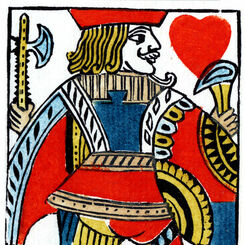
Woodblock and Stencil Jack of Hearts
A limited edition art print of the Jack of Hearts 1984 woodblock joker.
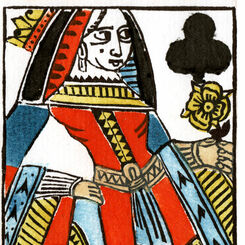
Woodblock and Stencil Queen of Clubs
A limited edition art print of the Queen of Clubs 1984 woodblock joker.
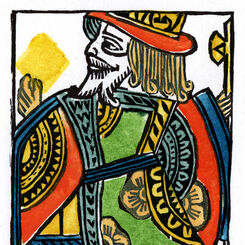
Woodblock and Stencil King of Diamonds
A limited edition art print of the King of Diamonds 1984 woodblock joker.
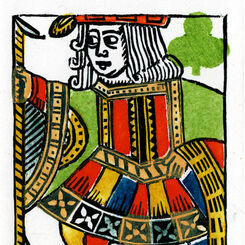
Woodblock and Stencil Jack of Clubs
A limited edition art print of the Jack of Clubs 1984 woodblock joker.
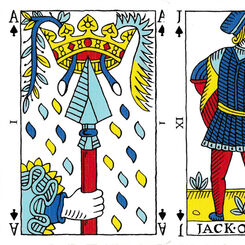
Pike and Clover playing cards
Pike and Clover playing cards created by Ian Cumpstey, Cumbria, UK, 2018.
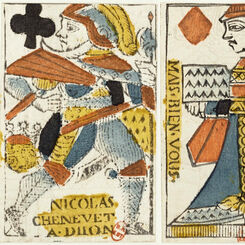
Burgundy pattern
The old Burgundy (or Burgundian) pattern by Nicolas Chenevet, Dijon.
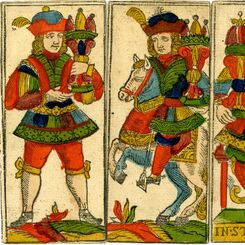
Trappola pack by Joseph Fetscher
Trappola pack published by Joseph Fetscher, Graz, 1739.
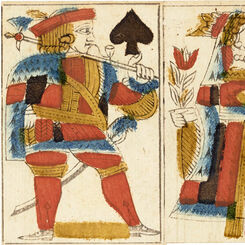
Lyon pattern by Michel Ressy
Lyon pattern by Michel Ressy, c.1760.
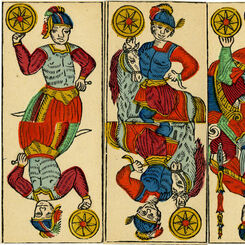
Trappola pack by Anton Herrl
Trappola pack of 36 double-ended cards published by Anton Herrl, Graz, Austria.
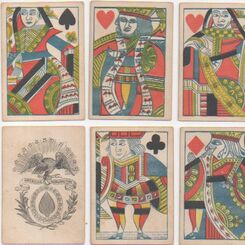
75: Early American cards
An overview of some of the early cards made in the United States.
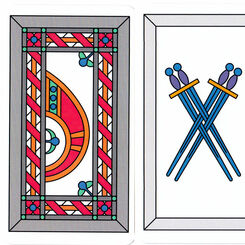
Moorish Deck
Review of “Trzes’ Moorish Deck” facsimile published by Ulrich Kaltenborn, Berlin, 2023.
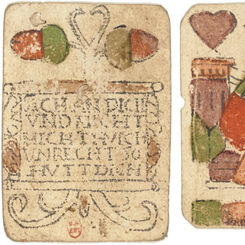
Early German playing cards
Some early examples of popular German playing cards from the XV and XVI centuries.
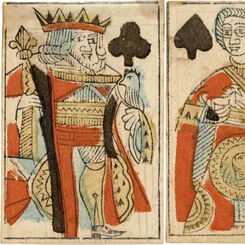
Auvergne Pattern
The Auvergne pattern is one of the oldest in France.
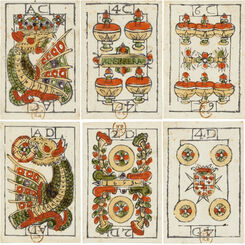
Infirrera
Italo-Portuguese-suited cards by Andrea Infirrera with the arms of Malta, 1693.
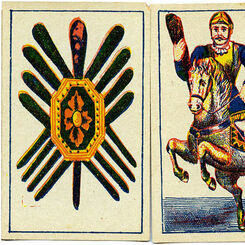
Portuguese cards for Brazil
Portuguese-type cards made in or for Brazil, c.1890.
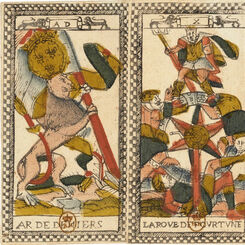
The Parisian Tarot
The “Parisian Tarot”, early 1600s, with imagery and design synthesizing several influences.
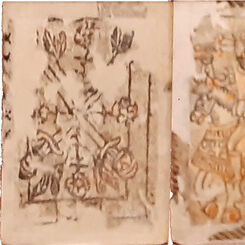
Vittoriosa Church Museum
Antique playing cards in Vittoriosa Church Museum dating back to the Knights of Malta period.
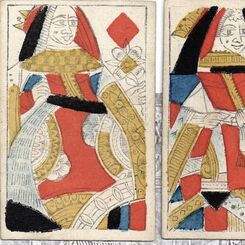
73: Fakes, Forgeries and Tax Evasion
When there are official taxes to pay, people will find a way to avoid paying them - often illegally....
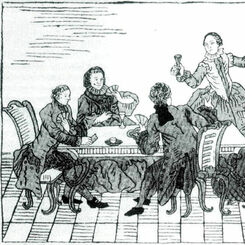
Russian Playing Card History - From the Beginnings to 1917
An in-depth review of the history of card-playing, gambling, legislation, manufacture and taxation o...
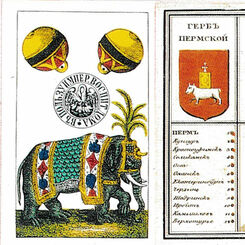
Russian Playing Card Monopoly
The Russian Playing Card Monopoly was established in March 1798 with all revenue going to support th...
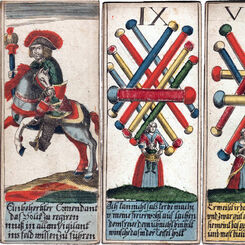
Trappola cards from Prague
15 Trappola playing cards possibly made by Johann Ziser of Prague, c1760.
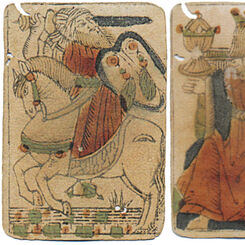
XV Century Spanish-suited playing cards
XV Century Spanish-suited playing cards with moorish influences
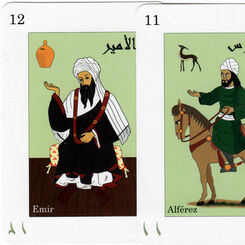
Juego de Naipes Andalusí
Andalusian playing cards designed by Marifé Montoya Carrillo with booklet by Jorge Lirola Delgado, 2...
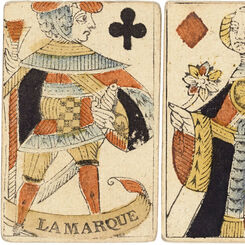
Languedoc pattern
The old Languedoc pattern was known at the beginning of the seventeenth century, if not before.
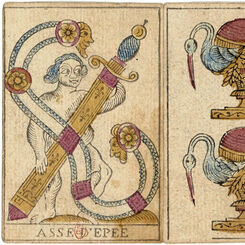
Pierre Roiné Aluette
Archaic form of Aluette published by Pierre Roiné, Nantes, c.1785.
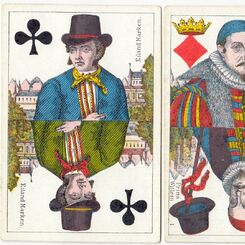
Dutch costume playing cards from an unknown maker
Another pack of Dutch costume playing cards c.1880.
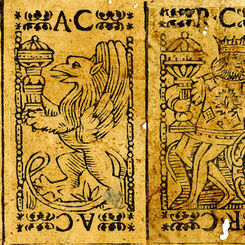
Portuguese-suited cards
Portuguese-suited cards with dragon aces, made in Italy, 1613.
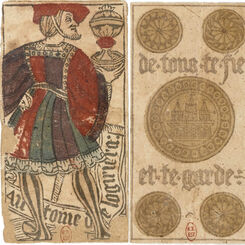
Antoine de Logiriera
Archaic Spanish-suited playing cards published in Toulouse by Antoine de Logiriera (1495-1518).
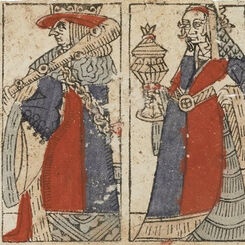
J. Deluy c.1490s
Archaic Spanish-suited cards produced by J. Deluy c.1490s.
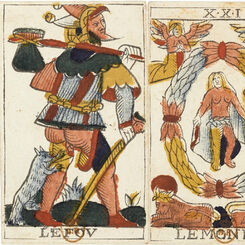
Jean Noblet Tarot de Marseille
Jean Noblet: the oldest known ‘Tarot de Marseille’ deck, Paris, c.1650.
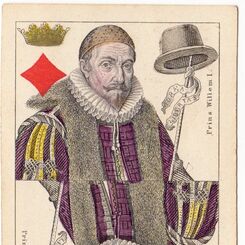
Dutch costume playing cards
Dutch costume playing cards made for the Dutch market in the second half of the 19th century.
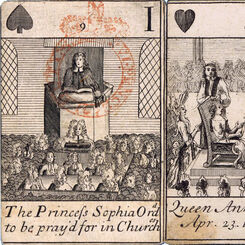
Royal Cards Reign of Queen Anne
“Royal Cards Reign of Queen Anne” cover historical events, both honourable and treacherous, during t...
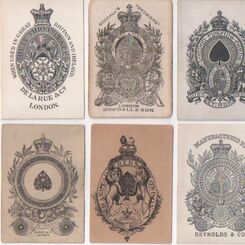
72: The Ace of Spades
In standard English packs the Ace of Spades is associated with decorative designs. This is a histori...
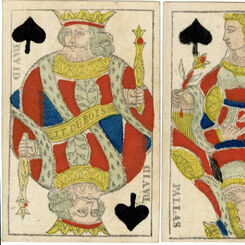
Dubois
Dubois card makers from Liège in the Walloon Region of Belgium.
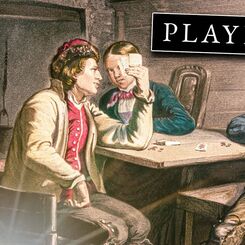
Playing Cards: A Secret History
Playing Cards: A Secret History
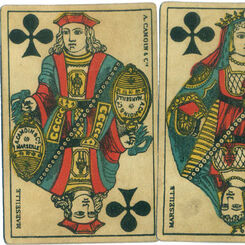
A. Camoin & Cie
This deck was inherited from ancestors, it has has a family history surrounding it. Details of the l...
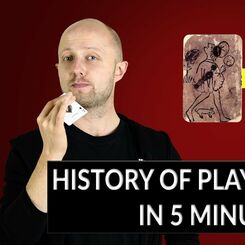
History of Playing Cards explained in 5 Minutes
Video by Art of Impossible. In this video you will get a short overview of the most important histor...
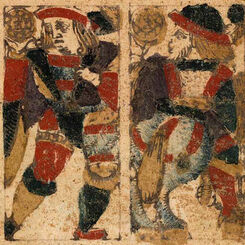
Toledo, 1584
Archaic Spanish-suited deck with 48 cards made in Toledo in 1584.
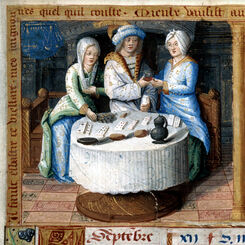
Gambling and Vice in the Middle Ages
Gambling and Vice in the Hours of Charles V: card-playing in the local tavern
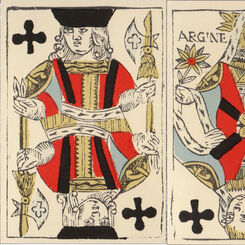
“Deck with French suits”
A facsimile of an early 19th century French-suited deck from the collection of F.X. Schmid.
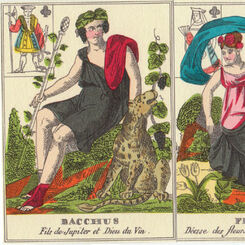
Jeu Mythologique
“Jeu Mythologique” facsimile 18th century pack by J M Simon, 1983.
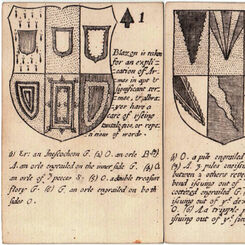
Heraldic playing cards
Reproduction of Richard Blome’s Heraldic playing cards, 1684, presented to lady guests at WCMPC Summ...
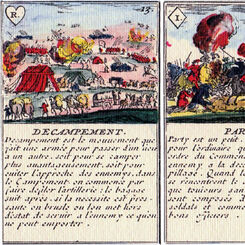
Le Jeu de la Guerre
Facsimile of “Le Jeu de la Guerre” designed by Gilles de la Boissière in 1698.
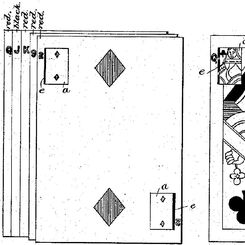
Corner Indices
Corner Indices were a major innovation in playing card production.


